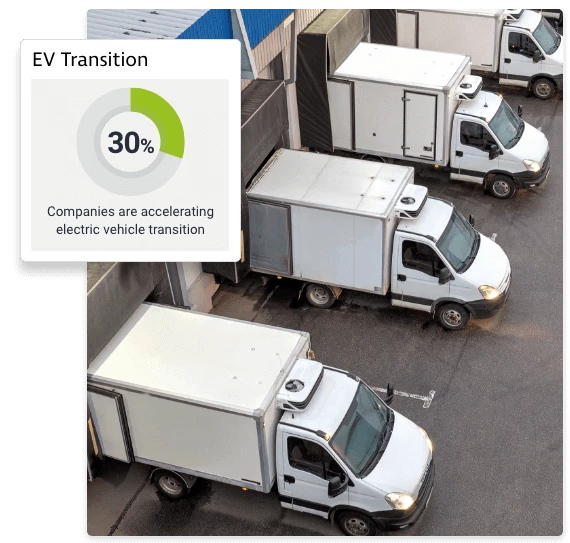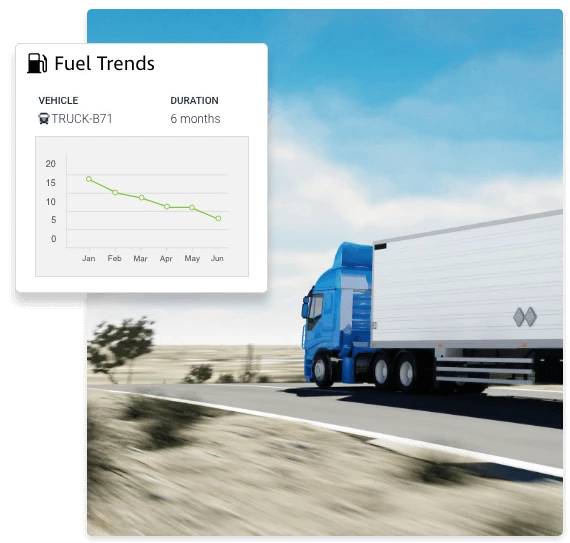Key Takeaway
More consumers than ever expect brands to address climate change in a meaningful way. For companies in transportation, logistics and other industries that utilise fleet vehicles, one way to fulfil this consumer mandate is through a reduction in carbon footprint. Here’s how industries can achieve this goal through the use of fleet management software like TN360.
What is a Carbon Footprint?
A carbon footprint is a measure of greenhouse gas emissions generated by actions like manufacturing, food production and transportation. These greenhouse gasses, primarily carbon dioxide and methane, are responsible for trapping heat in the atmosphere. Today, as much as 20% of all carbon dioxide emissions are the result of burning fossil fuels, making industries that burn fossil fuels clear targets for those concerned about climate change.
How to Reduce a Carbon Footprint
Reducing a carbon footprint equates to reducing greenhouse gas emissions. However, given that vehicle fleets play a vital role in economic growth, solutions are not as straightforward as simply eliminating emissions altogether. Reducing a carbon footprint requires a delicate balance between lower emissions, transportation costs and additional factors that affect everyone.
One method companies are using to reduce their carbon footprint is through the transition to electric vehicles, with 30% of fleet operations planning to accelerate their transition to electric fleets over the next year according to the Global Telematics Survey. While this is an excellent solution for many companies, it is often a longer-term option. Though a comprehensive transition can also take time to complete, there are many steps that can be taken sooner to reduce a carbon footprint.

How Fleet Management Software Can Help Reduce a Carbon Footprint (and Increase Bottom Line)
Many companies are finding ways to reduce emissions using fleet management software. These proactive measures are not only good for the environment, but also for a company’s bottom line.
The second largest expense area for large fleets is fuel cost, placing this line item ahead of payroll in terms of total expenditure. However, 96% of companies using fleet management software have seen reduced fuel costs of up to 40% according to the Global Telematics Survey. Here are some of the other impactful ways fleets are reducing their carbon footprints with fleet management software.

1. Decreasing Idling
An idling vehicle is an inefficient vehicle. Heavy-duty diesel engines such as those in long-haul trucks put off a significant number of pollutants while idling. In addition to increased emissions, idling also wastes fuel and increases vehicle wear-and-tear.
With fleet management software, operations managers can track engine idle time more efficiently. This data can be used to create and enforce anti-idle policies within a fleet, leading to an overall reduction in fleet vehicle emissions.
Potentially even more impactful are reduced fuel costs as a result of decreased idling. Large trucks can burn nearly 4.5 litres of fuel per hour. By reducing idling, these cost savings can be better spent maintaining the fleet, driving growth initiatives, or making capital investments.
2. More Efficient Travel
Poor route planning results in lost productivity, increased fuel spend and underutilised assets. In terms of carbon footprint, the extra travel results in greater emissions on longer routes and the potential for increased idling as employees wait for additional assignments.
With better vehicle tracking systems and real-time route planning, dispatch teams with large fleets can assign jobs more effectively, eliminating downtime between jobs. Additionally, with greater insights into route options, fleet managers can better plan routes to avoid delays that increase emissions and time on the road.
3. Better Vehicle Performance
Properly maintained fleet vehicles are more efficient than those that do not receive regular maintenance. Due to their heavy daily use, poorly maintained fleet vehicles are more likely to experience mechanical issues that can result in increased emissions, such as fuel injection problems, sensor issues or faulty exhaust systems.
With fleet management software and inspections, your team can spot issues with a fleet vehicle early, preventing faulty vehicles from being in service for prolonged periods. Additionally, regular maintenance schedules offer their own cost-saving benefits. By addressing small issues early, the risk of larger mechanical problems is reduced.
See How TN360 Can Reduce Your Fleet’s Carbon Footprint
Fleet management software can have a positive impact on reducing your company’s carbon footprint. By putting actionable data at your decision makers’ fingertips, you can potentially reduce your fleet’s impact on climate change and increase your profit margins.
Reducing your carbon footprint is only one of the ways TN360 can help your fleet. Contact us today to learn more about how our custom fleet software management solutions can reduce emissions, increase profits and drive business growth. You can also build a custom solution in just 30 seconds and get pricing information for a platform designed to meet your needs.

